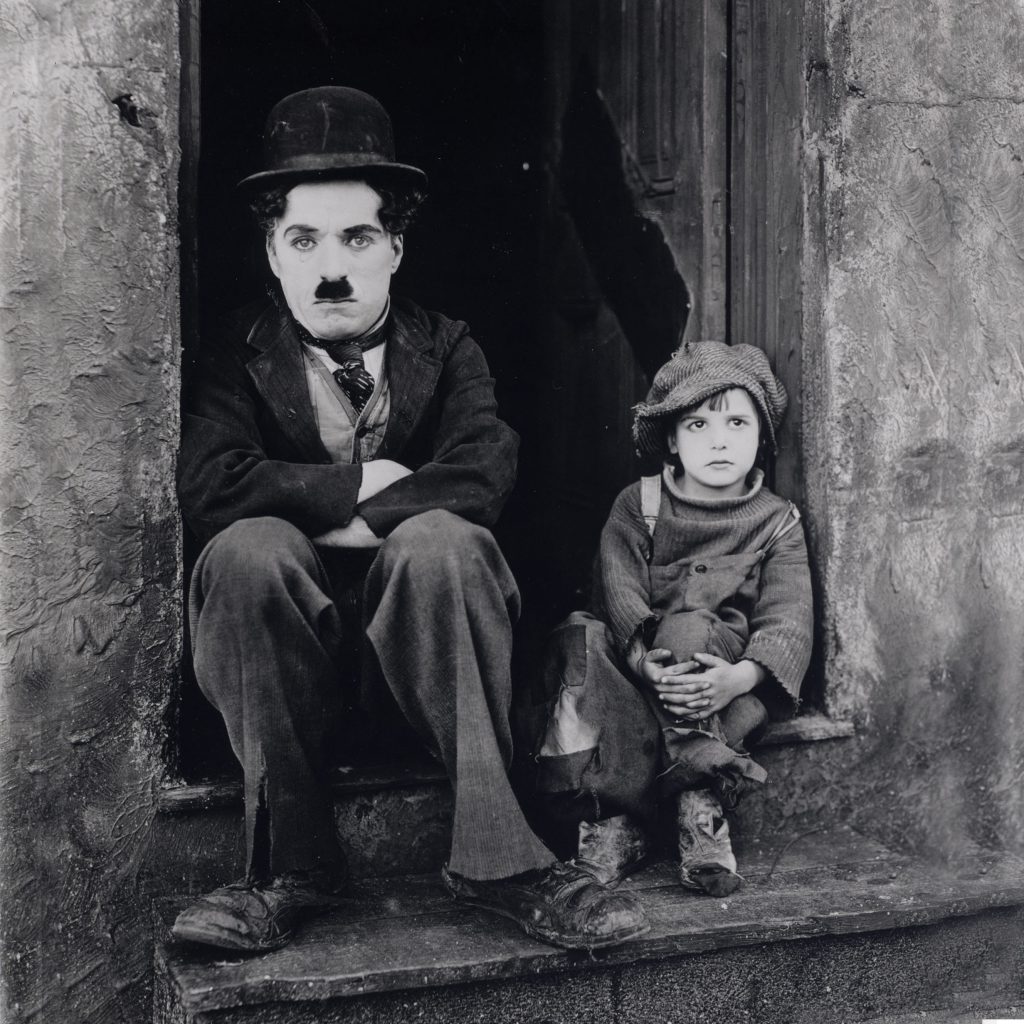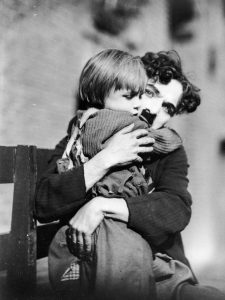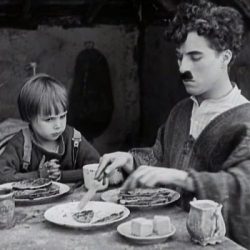In 1921, already famous for 68 short films, creative genius Charlie Chaplin released his first feature film, The Kid, to worldwide acclaim. Prancing around onscreen as his alter ego, “The Little Tramp,” Chaplin is accompanied by child actor Jackie Coogan, the titular kid, who would achieve immediate audience adoration upon the film’s release.
As the Tramp reluctantly comes to care for this abandoned child, Chaplin, inspired by his own personal experiences, crafts a characteristically humorous, yet emotionally timeless story about the familial resilience of an unlikely duo, leaving a lasting impression on audiences both past and present, including all of us who enjoyed the most recent film in our series on this year’s theme of resilience.

Co-stars Charlie Chaplin, left, and Jackie Coogan
The concept for The Kid came to Chaplin during a tumultuous time in his life. Chaplin had hastily married his first wife, Mildred Harris, in 1918 when they erroneously believed that she was pregnant. When she did become pregnant, she gave birth to a child who died after only three days, which left an impact on Chaplin. Perhaps as a result of this experience, Chaplin’s next film would feature what he now lacked: a child.
At the start of the film, much like the reluctant newly-wed Chaplin, the Tramp is resistant to take in the child when it appears in his path as he walks through an alleyway. He attempts to pawn it off on a couple people and even attempts to return it to the alleyway where he found it, but despite his best efforts, he cannot shake this unwanted responsibility.
The idea of parental responsibility has been a consistent theme throughout our film series, whether it’s Mahershala Ali’s Juan taking young Chiron under his wing in Moonlight, Josh Hamilton’s Mark Day coaching his daughter as best he can in Eighth Grade, or Sam Neill’s Hector begrudgingly looking after young Ricky Baker in Hunt for the Wilderpeople. All of these characters have varying degrees of reluctance or at least doubt over their own qualification as a parental figure, but despite these concerns, they all step into the role when it matters most.

The Tramp reluctantly takes in the abandoned child.
In the same manner, Chaplin’s Little Tramp concludes that there is nothing left to do but care for the child, which, while burdensome at first, is eventually rewarding. In the kid, the Tramp finds a partner-in-crime for his fraudulent window fixing business: the child, John, breaks windows with rocks which the Tramp is then hired to repair. But greater than this new money-making venture is the emotional relationship the Tramp develops with John. His affection becomes evident as he tenderly cleans John up after his meals and worries over him when he is sick. The Tramp is then devastated when the local “County Orphan Asylum” comes to claim John (similar to Chaplin’s own childhood experience of his mother being institutionalized in a mental asylum) and he fights tooth and nail to retrieve him, a complete reversal of his previous stance on child-rearing.
The chemistry between Chaplin’s and Coogan’s characters is so strong within the film that it comes as little surprise that their real-life relationship was just as strong. Chaplin spent much time taking Coogan to amusement parks and other activities early on in production and his attention cultivated a loyal and talented co-star. Young Coogan was a natural mimic, and as a result, could evenly match Chaplin’s strong sense of kinesthetic humor. His strong emotional reactions on screen drive home the tragic elements of the narrative as society misunderstands the nurturing relationship the Tramp and the kid share and attempts to tear them apart.

The Kid and the Tramp embrace after being separated by orphanage officials.
It is perhaps this idea that makes Chaplin’s comedic yet also melancholic story so appealing to audiences across time. The fact that two lonely outcasts can find solace and companionship in the most unlikely place––each other––gives hope to all that family can come from anywhere, no matter one’s circumstances in life. Keeping a family together truly is an act of resilience, yet as indicated by the tears streaming down both the Tramp’s and the kid’s faces upon being reunited, it is very much worth fighting for.


Recent Comments